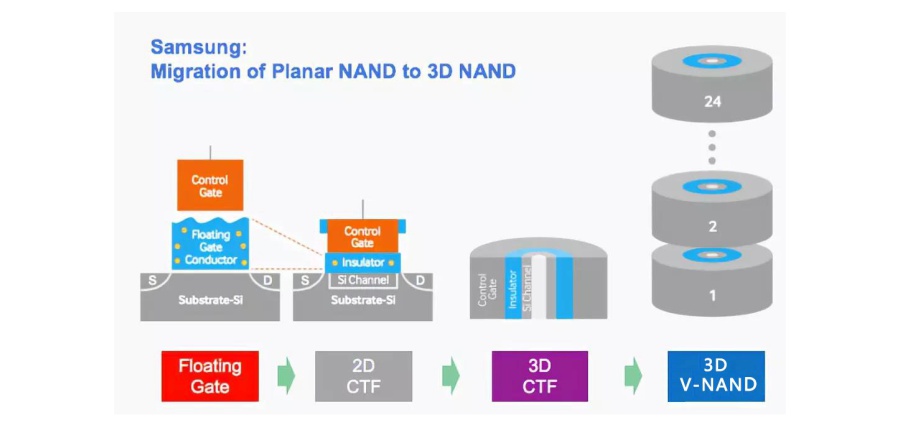What Is The Difference Between 2d And 3d Nand
Most laptops and mobile devices that you may purchase today have built-in Secure Digital Cards usually known as SD Cards. The SD card is a storage system with numerous useful features, depending on its application and venue. Using SD cards can be found here in several specific ways:
To expand the usable storage capacity for ringtones, messages, apps, music, and other files, you may attach an SD card to a tiny computer such as a cell phone.
You can change it for empty SD cards, instead of deleting any files, when one SD card in your camera fills up photos and videos.
Your speed is another measurement on an SD card. If you just storage files or take still photographs, speed is not very important. However, when recording and playing video, in particular in high definition (HD), speed is very critical. You can record better quality footage and faster HD video if you have a higher speed SD card.
Speed Class and Ultra High Speed (UHS) Speed Class have two standards for the SD Association. Both of these standards do not work, so be sure to apply your recording device to the appropriate standard. Let us examine each class more closely and whether we can determine the speed of an SD card.
What is NAND?
NAND Flash Memory is a flash memory type that stores data in memory cell arrays that have been designed with a floating gate transistor. There are two gates, i.e. the gate and the floating gate, and a voltage charge must be applied to the control gate to schedule a single cell. Instead, electrons are pulled at the control gate but the flow gate locks them inside the substratum, where they can stay under normal operating conditions for years. The control portal must be grounded to erase a cell, and voltage on the opposite or on the substratum must be placed.
Because of its affordability, storage density, and access speeds, NA-ND flash memory is the most common type of memory in the mass market. just as common and affordable as the GTX 630 for PCs. In most current mobile phones, as a primary and even secondary store, it can be used as a computer store on memory cards, and on solid-state drives, compared to the NOR flash, which is a little costlier and comparable to RAM.
What is 3D NAND?
In nearly all market segments, flash memory has replaced other memory technologies. This performance can be attributed to decreased costs by reducing the structure, more cell knowledge saved by different stages of voltage (MLC and TLC Flash Memory), and additional software features. In terms of structure minimization, today’s nm structures have reached a physical limit: the error frequency increases while the endurance and retention of the flash data are decreasing. The answer: NAND 3D. The 3D NAND flash memory can hardly be described as a stacked NAND (2D) grid.
What is 2D NAND?
2D NAND SD flash is flat, as the name implies. The cells that can store data are, in other words, placed side by side. In 2D NAND SD flash the flash memory is calculated according to the number of cells placed on a device and the amount of storage bits contained.
This method fits well, but it does have its limitations. The first, of course, is that cells can be put in a limited area. While technological developments have made cells ever smaller, there are limits to the degree to which a cell can be reduced while still performing reliably.
The Difference Between 2D and 3D NAND
As the NAND manufacturers tried to reduce the number of memory cells in 2D NA-ND, the interference from cell to cell led to a reduction in reliability. The obvious solution is to add and stack a different dimension – which needs to be redesigned and modified.
3D NAND offers a higher capacity potential than 2D NA-ND in a smaller physical space. 3D NAND can reduce the cost per gigabyte in comparison with planar NAND, improve electric use in order to decrease power consumption, increase reliability, and increase data writing performance. Where there are benefits, there are many drawbacks. The production costs for 3D NAND are higher. For detailed steps, please click.
3D NAND is largely built with MLC NAND but also operates with TLC. In order to reach their target market, the manufacturers need to achieve a balance between efficiency, capability, and quality.
For More Information about Blogs and News: Click Here


